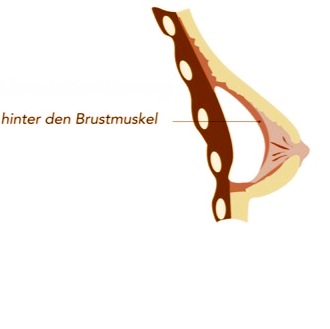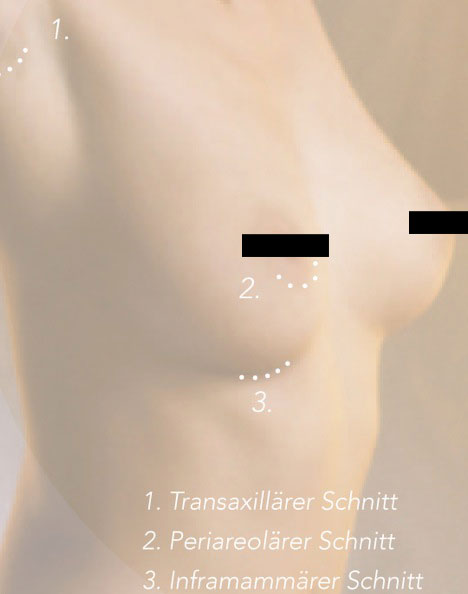The Preparation of a Breast Augmentation
If you are more than 30 years old, it is recommended to make a mammography prior to the operation. Make sure that you are facing a surgery, where possible, in optimal overall health and a rested condition.
- Taking aspirin or medications that contain aspirin in the two weeks prior to the operation are forbidden, as these can inhibit blood clotting.
- If you take medication regularly, you must discuss this with your doctor in advance.
- You should be in good health before the operation takes place.
- Avoid smoking before and after the operation.
- Plan on taking off seven to ten days afterwards to rest. The first few days after the operation you will have to reduce physical activity.
- Clear up all questions in detail before the operation – it is best to make a checklist. Find out about the advantages and disadvantages of implants – and possible guarantees given by the manufacturer.
The Surgery of a breast augmentation
Depending on how extensive the surgery is, breast augmentation can be performed on an inpatient or an outpatient basis. The surgery generally lasts 60 to 90 minutes.
Your individual anatomy and the objectives discussed previously with your surgeon define which incisions are to be made. The surgeon will make an incision approximately 4 cm long in the natural crease below the breast, along the edge of the areola or in the armpit. Experience shows that these incisions heal well.
Before the surgeon inserts the implant, he/she prepares the so-called pocket for the implant. The implant can either be placed on top of or under the chest muscle. This decision depends on the constitution of the tissue, as well as on the shape and size of the breast. In the case of extremely thin patients, there is a danger of the implant showing after the operation and it can also be felt. Here the preference is to insert the implant under the chest muscle. In such a case, however, a small piece of the large chest muscle must be detached in the lower region so that the implant does not move up and down when the chest muscle is active. Placing the implant over the chest muscle when there is enough residual volume of the breast and the soft tissue gives a very natural impression. Before the surgeon closes the incision, he/she will place small drainage tubes in the implant pocket so that blood and excess fluid can flow out after the operation. A tight bandage stabilizes the implants.
Positionierung subglandulär |
Postionierung submuskulär |
The Anaesthesia for breast enlargement
Breast augmentation is usually performed under general anaesthetic. This reduces stress on the patient. The anaesthetist will thoroughly examine the patient and then decide whether a patient may undergo general anaesthesia. The anaesthetist is present during the complete operation and monitors the anaesthesia. In certain cases it is possible to perform breast augmentation under local anaesthetic. However this is only possible when the implant is placed on top of the chest muscle. In addition to the anaesthetic, the patient also receives a sedative that makes her drowsy. She is then awake and relaxed, but doesn’t feel anything except a slight pulling or similar sensations without any pain during the complete procedure. The sedative can be taken as a pill, or injected into a vein in the arm.
The Breast-Implant
The material makes all the difference if a breast is to look natural – and of course feel natural too! It has proven best to insert the new generation of silicone implants. Since the so-called cohesive silicone gel has been developed, these implants do not leak. Scientific studies have shown that there is no evidence of a link between these implants and rheumatism, connective tissue disorders or other illnesses. There is generally no limit concerning the durability of the new silicone shells, and due to their new, rougher surface they embed themselves especially well in the body tissue. Ruptures of an implant are extremely rare. Today implants are given a life estimate of at least 15 to 17 years. We only use implants that have two layers of shell filled with cohesive silicone gel in order to provide our patients with the greatest possible guarantee of safety. Implants filled with a saline solution are an alternative to the silicone shells. The fluid is generally first infiltrated during surgery.

The salt solution is so similar to the body’s own fluid that it can be fully absorbed by the body in the case of a leak. The disadvantage of these shells is the liquid filling. It can “gurgle” and doesn’t feel as natural to the touch as silicone. Furthermore, these implants often lose some of their volume over time, so that we consider these products as being inferior.
An implant need not be replaced on a routine basis, however a certain aging process is possible here. Therefore we recommend undergoing a check-up using ultrasound and MRI after roughly 10 to 15 years. Older implants should be replaced after ten years.



 +49 0152 51366453
+49 0152 51366453